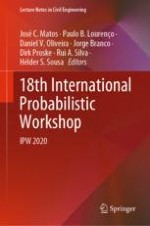2021 | OriginalPaper | Buchkapitel
Reliability Assessment of Oil and Gas Pipeline Systems at Burst Limit State Under Active Corrosion
verfasst von : Ram K. Mazumder, Abdullahi M. Salman, Yue Li
Erschienen in: 18th International Probabilistic Workshop
Aktivieren Sie unsere intelligente Suche, um passende Fachinhalte oder Patente zu finden.
Wählen Sie Textabschnitte aus um mit Künstlicher Intelligenz passenden Patente zu finden. powered by
Markieren Sie Textabschnitte, um KI-gestützt weitere passende Inhalte zu finden. powered by
